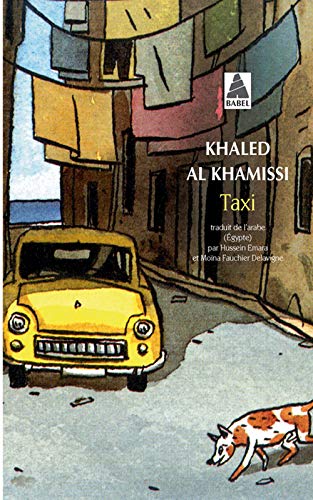
by Michael Loveday
This is the third instalment of an article in three parts. To begin with the first part, go HERE.
The ‘Polyphonic’ Novella-in-Flash
There is a smaller sub-category of novella-in-flash that adopts a wilfully diverse approach to point of view. These books revel in their changing perspectives – a radical expression of human subjectivity. They offer up an ensemble cast with varied connections to the novella’s central preoccupations. Sometimes this might be through a series of first-person narrators – disembodied, fictional voices – or sometimes through a rapidly changing cast of third-person characters moving and acting in specific locations.
In the ‘polyphonic’ novella-in-flash, the degree to which one character interacts with others can vary. Some books present an array of separate individuals, and the effect is like a montage of characters side by side, where interest arises from adjacent contrast. Some present an interrelated group of people, provoking additional story tension through the interaction of competing motives and needs.
Examples include the twelve different points of view in Thomas M. Disch’s ‘334’, a novella-in-flash published alongside four more traditional novellas in Disch’s work of science fiction 334 (1974); the seven connected characters who deliver the monologues in Graham Swift’s Last Orders (1996) all entangled by their associations with one character who has died; Geoff Ryman’s 253 (1998), which offers 253 one-page character summaries of the inner lives of passengers on a single London Underground tube journey; Khaled Alkhamissi’s Taxi (2006), with its array of conversations with Cairo taxi drivers; the cast of ten characters at Frank Lloyd Wright’s Fallingwater residence in Kelcey Parker’s Liliane’s Balcony (2013); the random multitude of monologues in Will Eaves’s The Absent Therapist (2014), where we feel we are eavesdropping on the private confessions of the world’s entire population; and John Brantingham’s Inland Empire Afternoon (2019), which introduces a cast of 40 characters within 45 pages, all of whom are linked by a series of events on the same afternoon in a particular urban area.
The Novella-as-Collection
Some novellas-in-flash offer a set of short-short stories that feel closer to a miscellaneous collection, as the various chapters don’t accumulate towards a single, overarching story. A shared setting may link the stories, or a closely controlled theme or motif or object, or a recurring character, without the material cohering to a unified narrative that progresses. (Some of the ‘polyphonic’ novellas above, like The Absent Therapist, Taxi, or 253 could also fit this sub-category, as they similarly don’t deliver a single, developing story situation through their pick and mix of voices.)
Examples of the novella-as-collection include Richard Brautigan’s Trout Fishing in America (1967), which connects its experimental short prose sections through the motif of trout fishing; Jack Robinson’s Days and Nights in W12 (2011), which is a series of responses (drawing upon the forms of memoir, short-short story, prose poem, historical non-fiction and literary criticism) to photographs of Shepherd’s Bush, London; and Barry Yourgrau’s Haunted Traveller: An Imaginary Memoir (1999), a series of first-person, very short tales all about journeys.
Other examples in this sub-category could be said to include Invisible Cities (1974) and Mr. Palomar (1985) both by Italo Calvino; Einstein’s Dreams (1993) by Alan Lightman; Braking Distance (2012) by Calum Kerr; With a Zero at its Heart (2014) by Charles Lambert; Ed’s Wife and Other Creatures (2015) by Vanessa Gebbie (which could also be placed in the ‘novella-in-prose-poems’ sub-category); Latter Day Saints by Jack Remiel Cottrell (published in the Ad Hoc Fiction anthology In The Debris Field (2018)); Ghostographs (2018) by Maria Romasco Moore; The Roster (2019) by Debbie Daniel; Sugar Mountain (2020) by Erica Plouffe Lazure; and The Loss Detector (2020) by Meg Pokrass.
The tighter the unifying theme that links the novella-as-collection, the more it might feel like a genuine novella-in-flash. Some of the above books (such as Invisible Cities, Einstein’s Dreams and 253) use a framing device to help glue the collection together – an ongoing narrative element that opens and closes the book and occasionally crops up in the midst of the sequence of short-short stories. Some of them, such as Braking Distance and The Roster, include linking characters who pop up in the background or foreground of multiple stories. In addition, the more that the novella-as-collection indicates some kind of narrative shift by the end, a meaningful change or development in the overall situation, then the more it will resemble a ‘classic-form’ novella-in-flash.
Conclusion
The Novella-in-Fragments, The Novella-in-Prose-Poems, The ‘Polyphonic’ Novella-in-Flash, The Novella-as-Collection – these sub-categories can be used to classify various books and pamphlets related to the ‘classic-form’ novella-in-flash.
Not all of the books listed above were labelled as novellas-in-flash/novels-in-flash upon publication, and certain readers might resist including some of them within the novella-in-flash family. But the possibilities for the novella-in-flash as a whole would be too restrictively understood if these books were not mentioned. Comparing all these works reveals the diverse strategies available to writers.
When evaluating the whole species of novella-in-flash, we encounter blurred lines, grey areas and tricky distinctions. In the 21st century, more and more books are thriving that are cross-genre or hybrid. An anarchic energy is smashing through preconceived limits of what’s possible.
Although this essay proposes a tentative definition for an archetypal, ‘classic’ form, it would be hasty to close down ideas about what the novella-in-flash can be. A Platonic ideal of the ‘classic-form’ novella-in-flash may be falling into shape at the very same time that the category is being subverted through writers’ persistent experimentation. Good books – and even whole literary forms – are often innovating, in an ongoing conversation with an imaginary norm.
My aim here is to open up a sense of possibility as you explore. If the novella-in-flash does feel like an unfamiliar animal, the very best thing that you can do is to read, read, read as many examples as you can. And read them closely.
It’s a beautifully varied species. Long may it remain so!
Invitation: Having encountered these descriptions of novella-in-flash sub-categories, what strategies and styles might you explore in your own novella-in-flash writing? What further reading or other research might you undertake?
__________________________
 Michael Loveday is an editor, mentor, and tutor in Adult and Higher Education. He was judge of the 2019 and 2020 Novella-in-Flash Awards at Bath Flash Fiction. He teaches an online course in writing a novella-in-flash: https://novella-in-flash.com/
Michael Loveday is an editor, mentor, and tutor in Adult and Higher Education. He was judge of the 2019 and 2020 Novella-in-Flash Awards at Bath Flash Fiction. He teaches an online course in writing a novella-in-flash: https://novella-in-flash.com/
This article is an extract from his craft guide Unlocking the Novella-in-Flash: from Idea to Manuscript, forthcoming from Ad Hoc Fiction in spring 2022: https://adhocfiction.com/
Grateful acknowledgement to Meg Pokrass, Michelle Elvy, Dave Swann and Anne Caldwell for advice in the development of this essay. This essay was supported using public funding by the National Lottery through Arts Council England.


 The core workshop of SmokeLong Fitness is all in writing, so you can take part from anywhere at anytime. We are excited about creating a supportive, consistent and structured environment for flash writers to work on their craft in a community. We are thrilled and proud to say that our workshop participants have won, placed, or been listed in every major flash competition. Community works.
The core workshop of SmokeLong Fitness is all in writing, so you can take part from anywhere at anytime. We are excited about creating a supportive, consistent and structured environment for flash writers to work on their craft in a community. We are thrilled and proud to say that our workshop participants have won, placed, or been listed in every major flash competition. Community works.